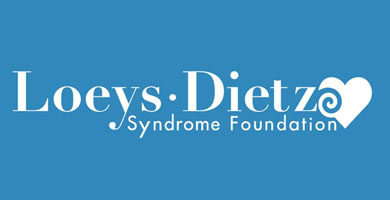Dr Naqvi is an expert in disorders of the aorta including Loeys-Dietz syndrome in children (also known as LDS syndrome), Marfan syndrome and undiagnosed connective tissue disorders in children. She is the Paediatric Aortopathy Marfan Lead at the Royal Brompton Hospital in Chelsea, London. She is an active member of the Pan London Aortopathy expert group and organises professional meetings on diseases of the aorta. She has also given an invited lecture at the national patient meeting for the Marfan Association at St George’s Hospital in London.
Loeys-Dietz Syndrome

What is a Loeys-Dietz Syndrome?
This is a genetic condition which affects connective tissue. Connective tissue is found in blood vessels, muscle, bone and ligaments, and internal organs giving strength and flexibility. It is similar to Marfan syndrome.
Some children may have inherited the condition from a parent, whilst others are the first case in their family. At this time, there are believed to be 5 different types caused by mutations in 5 different genes (TGFBR1, TGBR2, SMAD3, TGF1 & TGF2).

Symptoms
Most children will have no symptoms. They may be noted to have characteristic facial features with a number of medical issues affecting the eye, joint, feet, palate and spine, chest wall deformities, skull bone premature fusion, easy bruising, stretch marks, translucent skin, gut and immune problems with food allergies.
From a cardiac perspective, the majority have no symptoms during early childhood. However, they have a propensity to develop important enlargement of blood vessels in their body, sometimes with tortuosity. Localised enlargement of a part of a blood vessel is called an aneurysm. Aneurysms have weak walls and at a certain size carry a risk of tearing and rupture (dissection). Individuals with Loews Dietz can develop aneurysms anywhere in their body. The aorta is the large blood tube which carries oxygenated red blood from the heart, around the body and the size of this must be monitored regularly in affected individuals as should the other major blood vessels.
Cardiac Diagnosis
Clinical examination may reveal a heart murmur if there is a leak across any of the heart valves such as the mitral valve (mitral regurgitation). In many children, clinical examination will be normal. An echocardiogram will show any mitral regurgitation if it is present, and importantly will give a measurement of the size of the aorta.An ECG will also be performed and often a chest X-ray.
All patients will require regular monitoring of the major blood vessels which involves having a CT Scan or a MRI. An intravenous cannula may be required for these tests to allow contrast (dye) to be given to clearly image the aorta. In younger children, a MRI will require a general anaesthetic. Children will require regular assessments and by the time of adulthood will have undergone many scans.


Cardiac Treatment
Some children may initially require no treatment but all require regular repeated monitoring. The treatment approach depends on whether there is a leaking mitral valve) and the size and growth of the aorta.
Babies and children with a severe leak of the mitral valve may initially require treatment with medicines and surgery may be required to reduce the leak. Dr Naqvi works with an excellent team of NICOR audited congenital cardiac surgeons and if needed will refer your child to the one who is best for your child’s heart.
It is not unusual for children with Loeys-Dietz syndrome to have aorta’s which grow bigger than other children. In order to prevent or reduce this accelerated growth, oral medication is recommended. Dr Naqvi runs regular aortopathy paediatric clinics and prescribes appropriate medication including beta blockers and lorsartan. If despite such treatment the aorta becomes too big then Dr Naqvi will refer your child to one of the experienced world renowned NICOR audited cardiac surgeons at The Royal Brompton Hospital.
Dr Naqvi will also monitor your child’s growth and should they seem to be becoming taller than they would like, she will refer to specialists who can intervene to limit final adult height.

Prognosis
Regular monitoring and repeat scans are important as there is a risk of blood vessel spontaneous rupture. Dr Naqvi has cared for many babies and children with Loeys-Dietz syndrome and has followed them up until adulthood. She says, “As we learn more about the condition and recognise cardiac problems earlier, the future outlook for children with Loeys-Dietz continues to improve”.
Having Loeys-Dietz, syndrome does not stop children doing well in sports or from having a happy active childhood. There are certain sports which are contraindicated particularly those which could damage the chest or eyes eg. contact sports. However, there are other sports which those affected with connective tissue disorders can participate in such as swimming, badminton, table tennis and golf. I know some who are in school teams and even a few competing at national level. I even know patients who have achieved top grades at GCSE despite having heart problems in childhood.” There are a number of well-known successful people who are reported to have had connective tissue diseases including actors, musicians and political leaders.
Dr Naqvi is also the author of an article for The Marfan Association Magazine.
For more information about Loews-Dietz syndrome please see the following links:




